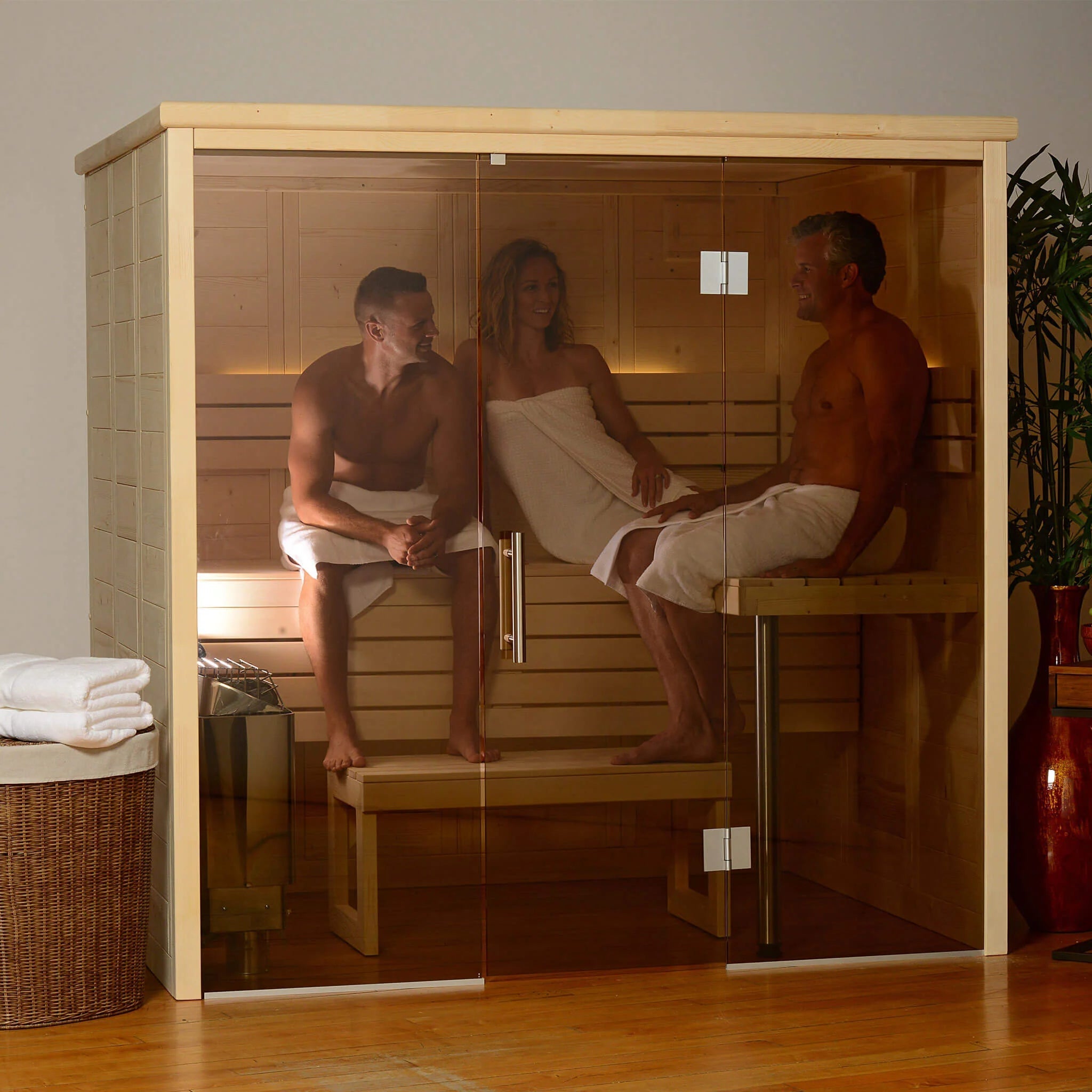The Best Strategy To Use For Traditional Sauna
The Best Strategy To Use For Traditional Sauna
Blog Article
Some Of Traditional Sauna
Table of ContentsThe 7-Second Trick For Traditional SaunaTraditional Sauna Fundamentals ExplainedThe 7-Second Trick For Traditional SaunaThe Best Guide To Traditional Sauna
Many of the weight shed in a sauna is water loss and is re-gained upon rehydrating. Nevertheless, undoubtedly sauna can be a fundamental part of a healthy weight management program. To look at the differences in between conventional and IR saunas, I will divide these right into proven, theoretical, and fabricated distinctions.Thus, the best factor in the saunawhich is at the ceiling straight over the sauna heateris typically between 185 and 190 F. Traditional Sauna. Claims that a typical sauna exceeds 200 F is merely not real and not suitable for electrical saunas offered in the US. The temperature level for a far-infrared sauna is usually set between 120 and 140 F; nonetheless, unlike the standard sauna, the goal in and IR space is not to accomplish a heat
As a result of this, the temperature level difference is virtually unnecessary, since excessive sweating leads to both sauna types, yet the technique of heating the body is different. In an IR sauna the bather will really feel hot and will certainly sweat profusely, but at a lot lower temperatures. Hence, if the objective is to invest longer amount of times in the sauna, the IR sauna is a good choice.

9 Easy Facts About Traditional Sauna Explained
When the heat is attained, the elements cycle on and off to keep the high temperature. A lot of typical sauna individuals delight in pouring water over the rocks to create steam to raise sauna humidity levels. The advantages of putting water over the rocks consist of: making the room a lot more comfortable, moistening the nasal passages, and allowing the use of aromatherapy by mixing crucial oils with the water.
In a far-infrared sauna, the warm front penetrate the body to successfully warm the body and elevate the body core temperature level. To accomplish this boosted temperature, Far-infrared emitters produce infrared energy which is close to the very same wavelength as that which the body naturally emitsoften described as the "Crucial Range" of 7 to 14 microns), so the energy is well obtained by the body.
When the power gets in the body, it creates the body temperature to increase and ultimately results in perspiration. In an infrared sauna it is very important for the emitters/heaters to stay on nearly regularly. Given that there is no mass of rocks to maintain warm, the sauna will cool if the emitters closed off.
As discussed above, the sauna bather in an infrared room intends to position himself in front of running emitters to get maximum address take advantage of the warm. The home heating time for the 2 areas can be extremely various, depending upon exactly how the spaces are used. For a traditional sauna, a bather needs to permit 30-40 mins for the area to attain a desired temperature level and to properly pre-heat the rocks.
Getting The Traditional Sauna To Work
A well created sauna will usually accomplish a temperature level of 150-160 F in about 30-40 mins. For hotter temperatures, the space might require to heat for a longer period.
To some, 15 mins was "thrown away" while the infrared power heated the wood panels as opposed to warming a body, while others locate a pre-heated room to be extra comfy and think a raised starting temperature level is essential to start sweating. The size of advised use for each space is around the very same (10-15 mins per session); nonetheless, as a result of the reduced air temperature levels and the capability to feel the effects of infrared warm much faster than a typical sauna, it is not unusual for an individual to spend a total amount of 20-30 mins in an infrared sauna.
Standard saunas have a tendency to be larger (thus utilize even more electricity) than infrared saunas, although traditional saunas are certainly readily available like it in one and two person sizes too. For a two-person conventional sauna, 5x6 or 5x7 size is most preferred. The leading bench can easily seat two or three individuals and is likewise enough time to rest throughout the sauna session.


The ordinary cost per kWH of electrical energy in the U.S. is about $0.11, so a 4.5 kW heating unit will certainly cost around $.50 to run for one hour, if the heating unit runs continually for one hour. Usually a sauna heating system will certainly compete 75% of the first hour and 50% of succeeding hours on because the elements cycle once the established temperature is accomplished.
Traditional Sauna Fundamentals Explained
A 2 individual far-infrared area is typically literally smaller sized than a conventional sauna, often about 4' x 4' or smaller. The IR home heating system is usually 1.5-1.7 kW making use of a 120 volt 15 amp content plug-in solution. Since the space can be made use of quicker than a sauna space, we will presume the room is utilized for to of an hour consisting of warm up time.
There is a seldom talked about distinction in the social experience in between the two rooms. While our culture has actually shed several of the social advantage of the standard sauna experience, it can be extremely socially fulfilling. From family members time in the sauna, to heart-felt discussions with significant others, to sauna partiesthe typical sauna experience can bring about intimate mingling.
A lot of higher end infrared rooms consist of colored light treatment, sound systems and full-glass fronts.
Report this page